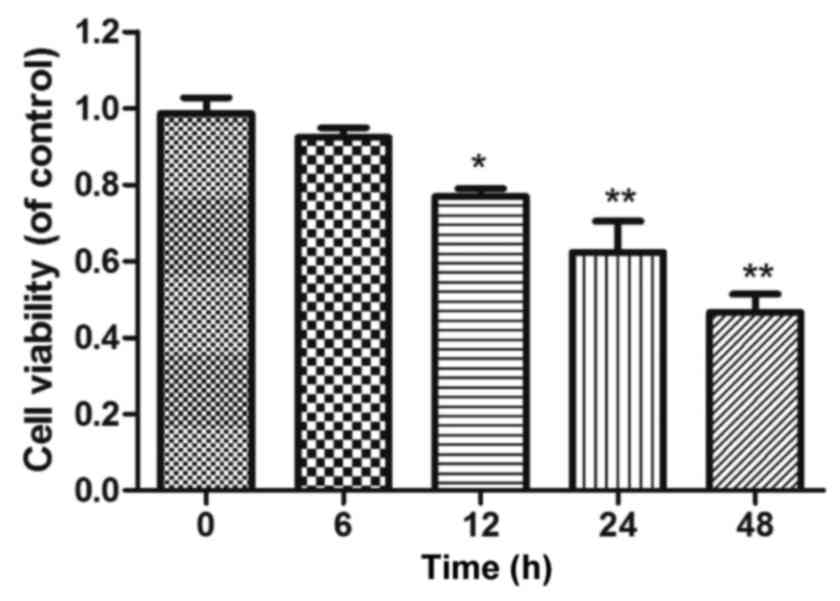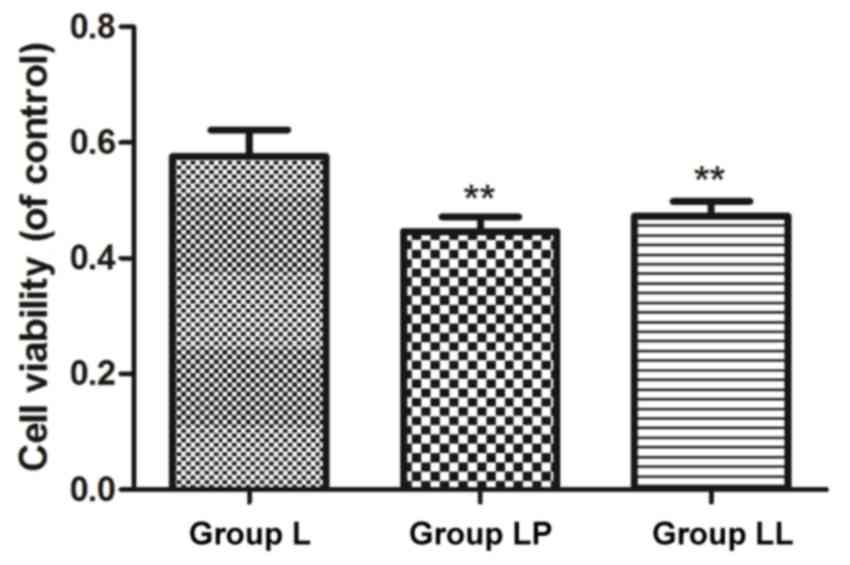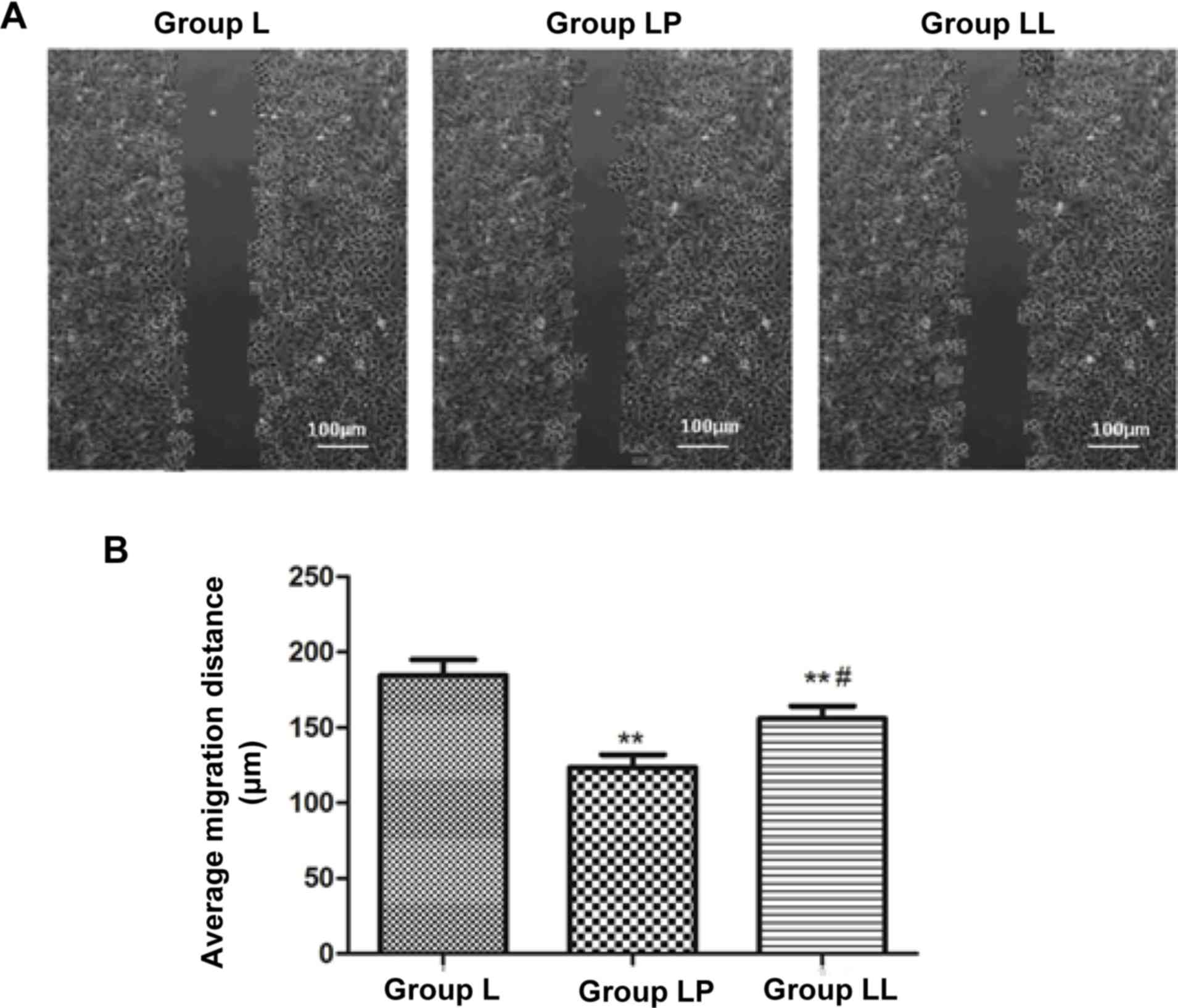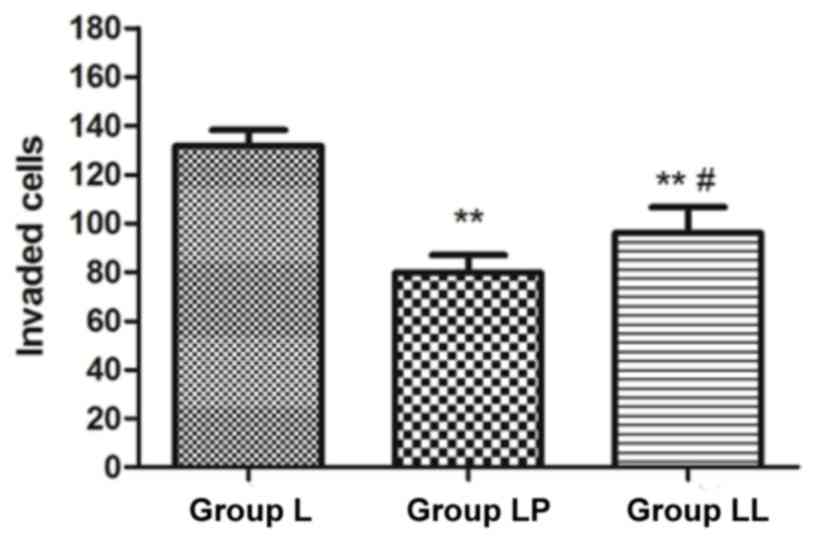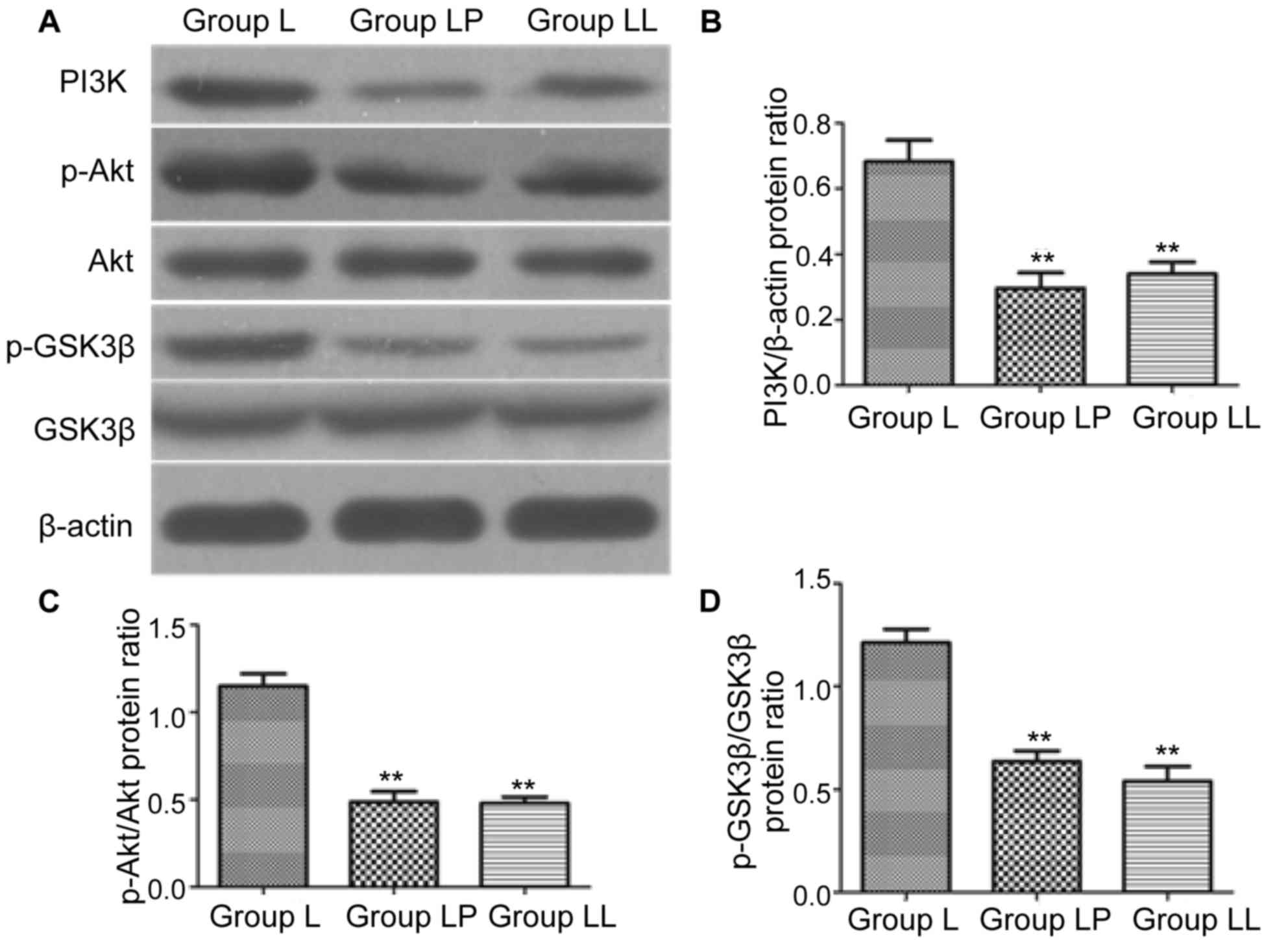Paclitaxel increases the sensitivity of lung cancer cells to lobaplatin via PI3K/Akt pathway
Retraction in: /10.3892/ol.2021.12480
- Authors:
- Published online on: February 20, 2018 https://doi.org/10.3892/ol.2018.8086
- Pages: 6211-6216
-
Copyright: © Ma et al. This is an open access article distributed under the terms of Creative Commons Attribution License.
Metrics: Total
Views: 0 (Spandidos Publications: | PMC Statistics: )
Total PDF Downloads: 0 (Spandidos Publications: | PMC Statistics: )
Abstract
The effect of paclitaxel combined with lobaplatin on the sensitivity of lung cancer cell line NCI‑H446 through influencing the phosphatidylinositol 3‑kinase (PI3K)/Akt pathway was investigated. The sensitivity of lobaplatin to NCI‑H446 and the effect of paclitaxel and PI3K inhibitor LY294002 combined with lobaplatin on the sensitivity to NCI‑H446 were detected via methyl thiazolyltetrazolium (MTT) assay. The effect of paclitaxel combined with lobaplatin on cell apoptosis was detected using flow cytometry, the effect of paclitaxel combined with lobaplatin on the cell migration was detected via cell wound scratch assay, and the effect of paclitaxel combined with lobaplatin on the cell invasion was detected via Transwell assay. Finally, the effect of paclitaxel on PI3K/Akt pathway was detected via western blotting. MTT assay showed that 30 µg/ml lobaplatin could significantly inhibit the growth of NCI‑H446 (p<0.01). Lobaplatin group (group L), 2 µg/ml paclitaxel combined with lobaplatin group (group LP) and lobaplatin combined with 10 µmol/ml LY294002 group (group LL) were set up. The cell survival rates in group LP and group LL were significantly lower than that in group L (p<0.01), and the cell survival rate in group LP was similar to that in group LL (p>0.05). Flow cytometry revealed that the cell apoptotic levels in group LP and group LL were obviously higher than that in group L (p<0.01), and there was no statistically significant difference in the cell apoptotic level between group LP and group LL (p>0.05). Cell wound scratch assay showed that the cell migration capacity in group LP was significantly lower than those in group L and group LL (p<0.01, p<0.05), and the cell migration capacity in group LL was lower than that in group L (p<0.05). Besides, Transwell assay revealed that the cell invasion capacity in group LP was obviously lower than those in group L and group LL (p<0.01, p<0.05), and the cell invasion capacity in group LL was lower than that in group L (p<0.01). Finally, western blotting showed that the levels of PI3K, phosphorylated‑Akt (p‑Akt) and phosphorylated‑glycogen synthase kinase 3β (p‑GSK3β) in group LP and group LL were significantly lower than those in group L, and the differences were statistically significant (p<0.01). Paclitaxel can significantly increase the sensitivity of lobaplatin to lung cancer cell line NCI‑H446. Moreover, paclitaxel can enhance the effect of lobaplatin on lung cancer cells and reduce the drug resistance through inhibiting PI3K/Akt pathway.




